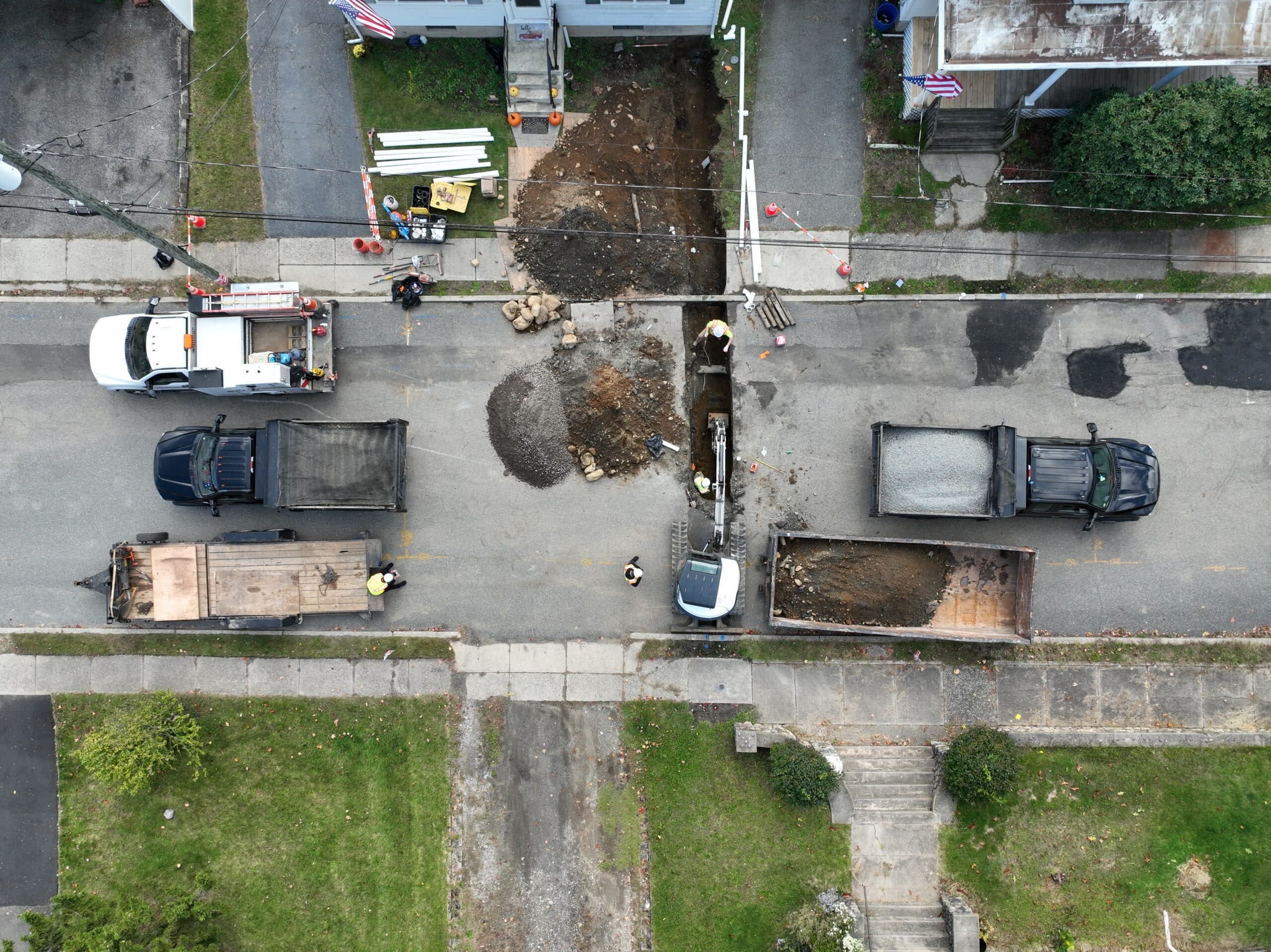Fixing a sagging sewer line typically requires professional intervention, as it can be a complex and challenging issue to address. A sagging sewer line can lead to problems like blockages, backups, and potential damage to the pipe. Here are the general steps involved in fixing a sagging sewer line:
Steps To Fixing A Sagging Sewer Line
1. Inspect the Line:
The first step is to identify the location and extent of the sagging in the sewer line. This may involve using a sewer camera to assess the condition of the pipe and pinpoint the exact location of the sag.
2. Consult a Professional Plumber:
Contact a licensed plumber or sewer specialist with experience in sewer line repair. They have the expertise and equipment necessary to address sagging sewer lines.
3. Assess Repair Options:
- Repair Options: Depending on the severity of the sag and the condition of the pipe, the plumber will evaluate potential repair options. Repair methods can include:
- Pipe Relining: In some cases, the plumber may recommend trenchless pipe relining, where a new lining is inserted into the existing pipe to reinforce it.
- Excavation and Replacement: If the sag is severe or the pipe is damaged beyond repair, excavation and replacement of the affected section may be necessary.
- Ensure that the chosen method complies with local building codes and regulations.
4. Excavation (If Required):
- If excavation is necessary, the plumber will dig a trench to access the sagging portion of the sewer line. The exact location and depth of the trench will depend on the pipe’s layout and the extent of the sag.
5. Replace or Reinforce the Pipe:
- Depending on the chosen repair method, the plumber will either replace the sagging section of the pipe with new piping or reinforce the existing pipe with a liner or other appropriate materials.
- Ensure that the new section of pipe is properly graded to allow for proper drainage and to prevent future sagging issues.
6. Testing and Inspection:
- After the repair or replacement is complete, the plumber will conduct tests to ensure that the sewer line is functioning correctly. This typically involves running water through the line and checking for leaks or blockages.
- If the repair is successful, the plumber will backfill the trench, restoring the landscape as necessary.
7. Preventative Measures
- To prevent future sagging or damage to the sewer line, consider implementing preventative measures. This may include adding support structures to prevent sagging in vulnerable areas, ensuring proper backfilling and compaction during repair, and regular sewer line maintenance.
8. Permit and Compliance:
- Be sure to obtain any necessary permits for the repair work, and ensure that the repair complies with local building codes and regulations.
If the clog persists or if you encounter significant resistance while using the auger, it’s essential to call a professional plumber. Some sewer line clogs may require specialized equipment or repairs beyond what you can do on your own. Additionally, attempting to fix a sewer line yourself may cause damage to the sewer line if not done correctly, leading to more extensive and costly repairs. If you would like a free sewer service assessment in New Jersey, contact us at (201) 581-3740 or fill out our contact form.
⚠️ Are you experiencing sewer issues in New Jersey and need a sewer line repair and replacement specialist to provide you with a service or second opinion?
Contact BRUTE Contracting and you will be greeted by our owners, Daniel Radici or Uri Bussi. Daniel or Uri will listen to your sewer issues and provide you with the best option regarding your current situation and a free estimate for your sewer line replacement service.
If you qualify, you will be provided with a free sewer camera inspection so our team can assess the condition of the sewer line and provide you with an in-depth proposal regarding the scope of work and costs required to repair or replace the sewer line.


